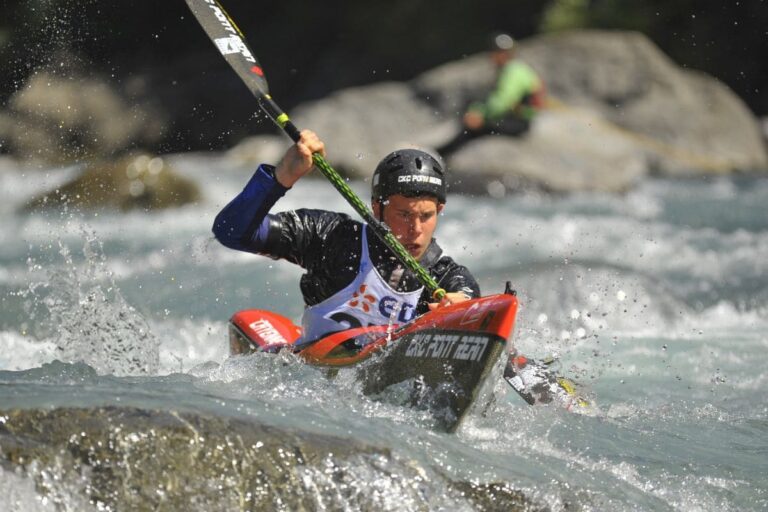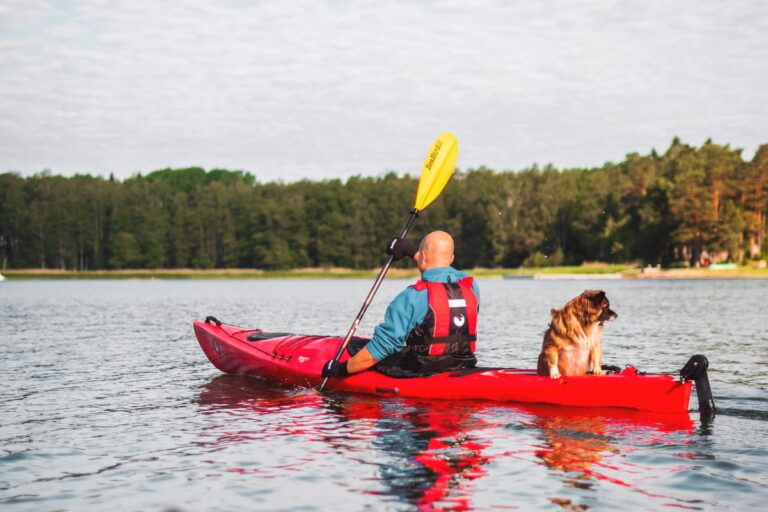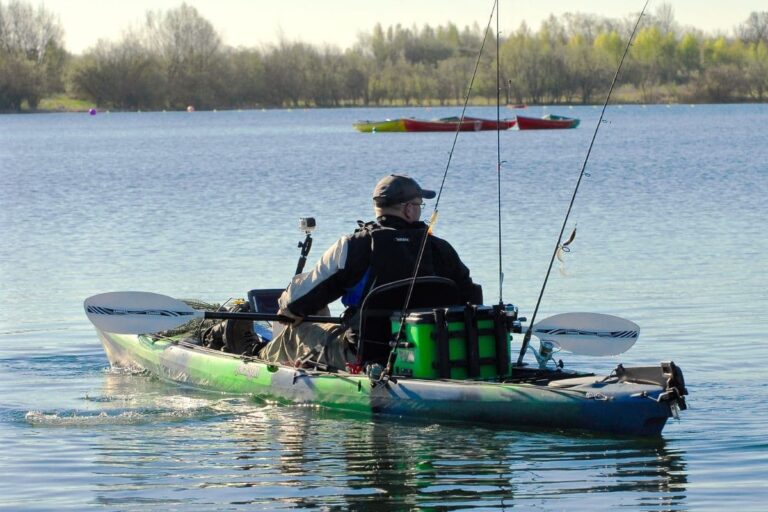How Many Calories Does Kayaking Burn?
When choosing any kind of exercise, it’s important to learn about the various health benefits they provide and how each activity will affect your body.
As most of us know, kayaking is an excellent form of exercise, but is it also good for burning calories?
On average, a paddler weighing 125 pounds can typically burn just under 300 calories/hour. The average person who weighs around 150 pounds will burn slightly more calories (just under 340 per hour.) The amount of calories you can burn from kayaking depends on several factors, including your bodyweight, the weight of your kayak, how fast you go, and other variables like water resistance and wind resistance.
How Many Calories Do You Burn While Kayaking?
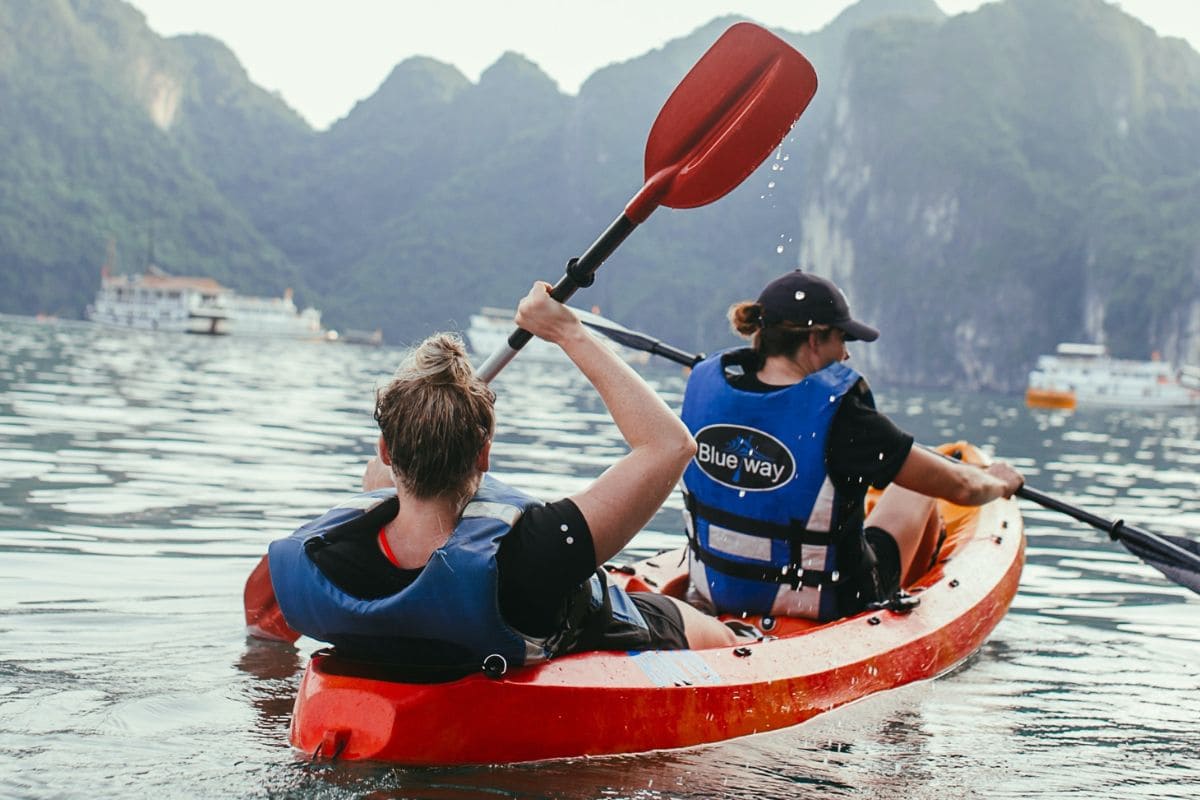
It’s not easy to measure the precise amount of calories a kayaking trip will burn, because there are so many variables at play.
Factors like water resistance and wind will change from one kayaking trip to the next.
You may also carry more gear on some trips than others, which increases the number of calories you’ll burn.
The basic principle of any physical activity is that the number of calories that are burned are in direct proportion to the intensity level of the exercise.
So if you paddle with vigorous effort and carry more weight, you will burn more calories with every stroke.
Similarly, you will burn extra calories if you are paddling against strong winds or currents.
Despite these changing conditions and variables, it is possible to get some rough averages.
For example, a paddler who weighs 125 pounds typically burns around 283 calories/hour when kayaking.
If you carry more body weight, (say closer to 200 pounds), you’ll burn about 450 calories in an hour of paddling!
Someone who weighs 130 pounds can burn up to 300, and 400 calories may be burned by someone who weighs 175 pounds.
Those impressive numbers might sound appealing if one of your kayaking goals is to lose weight!
Of course, if you set a more relaxed pace and prefer to just drift with the currents, you will burn fewer calories.
Either way, kayaking is still a great aerobic exercise for your entire body if you’re looking to burn off and get in shape.
Regardless of how many calories you burn, kayaking can be a lot of fun, and add to that the benefits to your mental health of being out in nature.
Many people take up kayaking for fun, and that’s one of the best things about this sport.
It doesn’t have to feel like a workout or a challenge, and it’s easy to get your heart pumping while paddling out on the water.
It’s easy to have a good time while burning calories!
Which Muscles Do You Exercise While Kayaking?
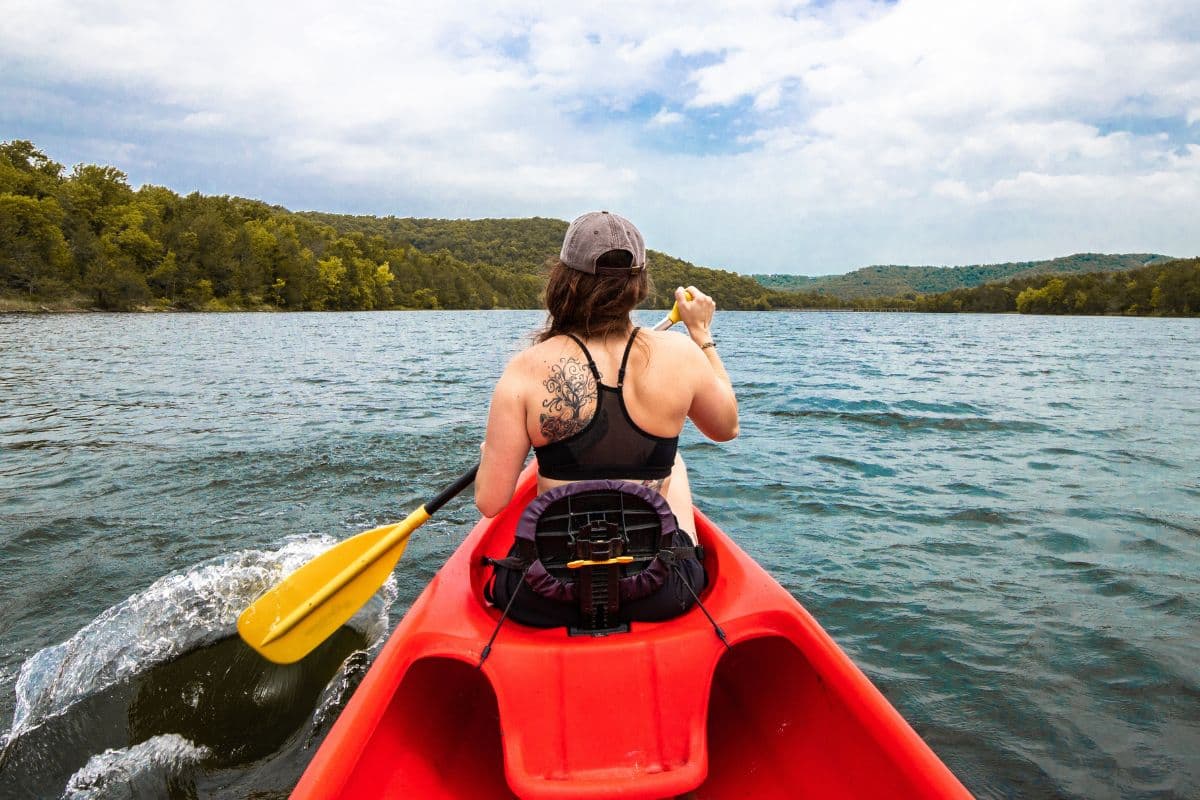
It’s also essential to consider how kayaking benefits different parts of your body.
So, which muscles are targeted by paddling a kayak?
It won’t surprise you to learn that the majority of muscles engaged during kayaking are those in the shoulders and back.
In order to propel a kayak, you must put at least moderate and consistent effort into turning, dipping your paddle, and pushing against the water.
As you move your paddle back and forth using the proper technique, you will target your shoulder and back muscles.
You’ll find that the anterior, lateral, and deltoid muscles are all working to move your paddle, and you are also engaging your chest and abdominal muscles as well.
Additionally, as you need to maintain your balance in the boat, you’ll also engage your core muscles constantly on the water, helping you burn calories even when you aren’t paddling.
Furthermore, kayaking also targets lower muscle groups and sometimes offers a quick method for developing a six-pack, because you will constantly be turning your body from side to side as you paddle.
Various muscles in your arms will get a great workout, including the forearms, triceps, and biceps.
So if you’re looking for toned and muscular arms, kayaking is a great option!
Don’t underestimate the physical benefits of kayaking, and don’t assume that your arms are the only part of your body that will get a workout, because that’s not the case!
Admittedly, kayaking does not directly work your leg muscles as much as your upper body.
However, getting in and out of the kayak, carrying your boat to and from the water, and lifting and maneuvering it will provide a decent amount of activity for your legs as well.
You can expect to be pretty sore after a day of kayaking.
While this activity provides a great workout, you need to be careful not to overdo it, especially if your body is adjusting to regular exercise.
With time, you should find that you’ll develop some impressive muscles throughout your whole body from the workout that kayaking provides.
In addition, since kayaking burns calories, you’ll likely enjoy the weight loss kayaking can offer as well.
Does kayaking count as cardio or strength training?
Kayaking is both! Paddling fast is excellent cardiovascular exercise, because it raises your heart rate.
It’s also very easy to speed up or slow down as needed to make the workout fit your needs.
Additionally, the resistance of the water and the challenge of keeping your kayak upright will work key muscles and strengthen your overall muscle mass.
Is kayaking good for weight loss?
Yes, kayaking is a great way to lose weight.
A lot of calories are burned while you’re paddling, so a person can actually burn calories and lose weight somewhat quickly if they kayak regularly.
The harder you paddle, the more calories you will burn, so you can opt for a more challenging weight loss workout, or take it easy.
Do you burn more calories while kayaking than canoeing?

Both kayaking and canoeing will burn a good amount of calories. However, kayaking will burn more calories because it provides a more intense upper body workout.
Of course, either sport can be customized to burn more or less calories by varying the intensity of the workout.
Paddle boarding is also a fun sport that allows you to enjoy the great outdoors while helping you lose weight.
Conclusion
For the average kayaking enthusiast, this activity can burn around 300 calories/hour, assuming they are also of average weight.
If you paddle harder or increase the difficulty of the workout conditions, you’ll find that you’ll burn a lot more calories.
If you’re looking for a challenging workout, try paddling upstream, against the current, in windy conditions, or add weights to your boat to increase the difficulty of propelling it through the water.
These are all ways to give you an even more intense workout!
Table of Contents



